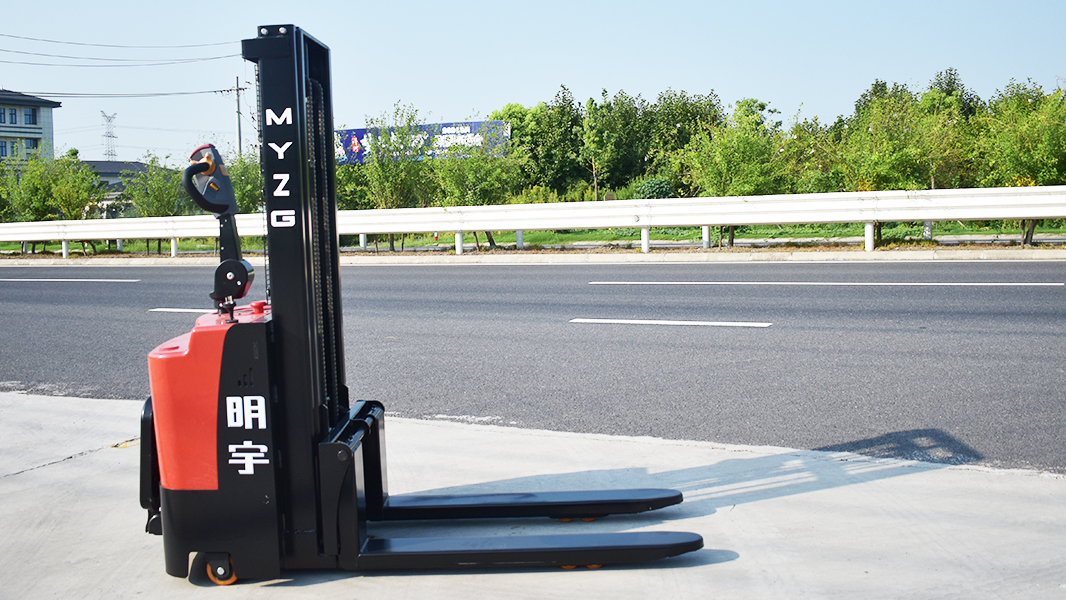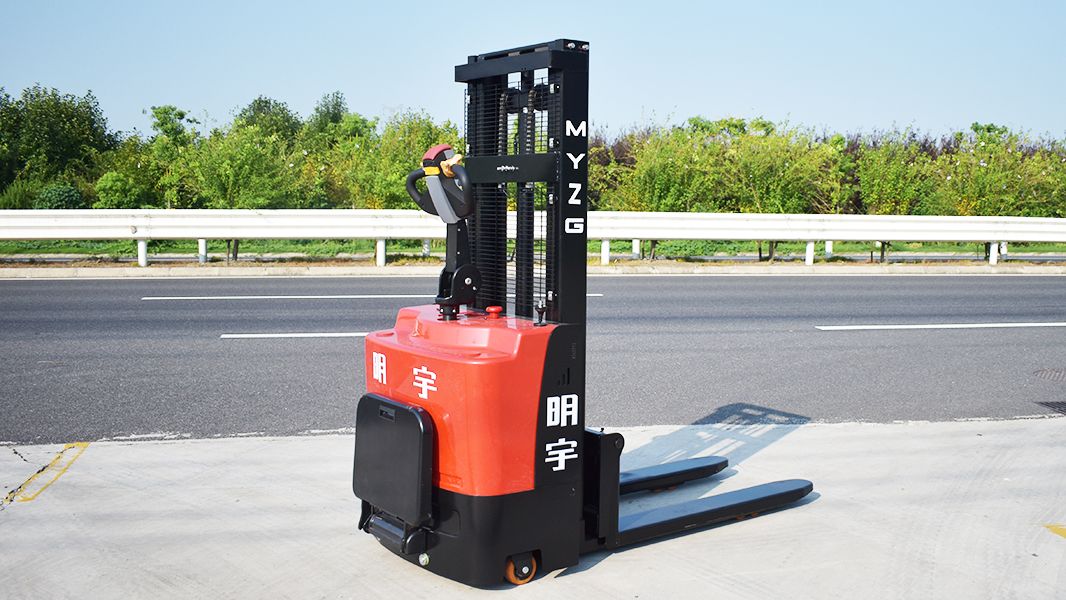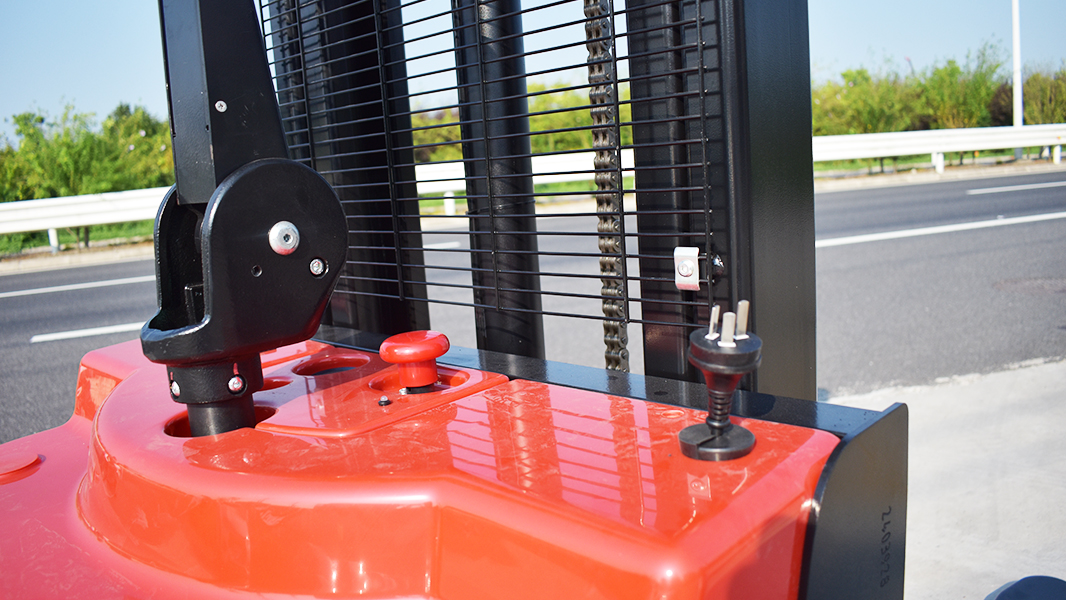1. Introduction
A stacker forklift is a specialized material-handling machine designed to lift, move, and stack pallets in warehouses, retail spaces, and industrial environments. Unlike conventional forklifts, stacker forklifts are typically smaller, more maneuverable, and designed for lighter loads. These machines bridge the gap between manual pallet jacks and larger, ride-on forklifts, making them ideal for operations with limited space and lower lifting requirements.
Stacker forklifts play a crucial role in improving warehouse efficiency, reducing labor-intensive lifting tasks, and enhancing workplace safety. They are available in manual, semi-electric, and fully electric variants, each suited for different operational needs. This article explores the different types, features, benefits, applications, and considerations for choosing the right stacker forklift for various industries.
2. Types of Stacker Forklifts
Stacker forklifts come in various types, each designed for specific applications. Below are the most common types:

Operated by manual force through hydraulic pumps.
Best suited for low-intensity applications and short-distance movement.
Ideal for small warehouses and retail stores.
Semi-Electric Stacker Forklift
Features an electric-powered lifting mechanism while movement remains manual.
Provides an affordable option with improved efficiency over manual stackers.
Suitable for light-to-medium load stacking operations.
Fully Electric Stacker Forklift
Equipped with both electric lifting and movement functions.
Offers enhanced efficiency, reducing operator fatigue.
Ideal for high-volume warehouse environments.
Straddle Stacker Forklift
Designed with extended legs for increased stability.
Can handle various pallet sizes without requiring bottom clearance.
Often used in tight spaces requiring high stacking.
Counterbalanced Stacker Forklift
Does not have extending legs, relying on counterweights to balance loads.
Suitable for situations where bottom clearance is necessary.
Can handle slightly heavier loads than straddle stackers.
Built with telescoping forks to reach deep into racks.
Ideal for high stacking applications in warehouses.
Commonly used in logistics and distribution centers.
3. Key Features of a Stacker Forklift
Understanding the key features of stacker forklifts can help businesses choose the right model for their needs. Some important features include:
Load Capacity: Typically ranges from 1,000 lbs to 5,500 lbs, depending on the model.
Lifting Height: Can vary from a few feet to over 16 feet for high-reach applications.
Power Source: Available in manual, battery-powered, or electric motorized versions.
Maneuverability: Designed for tight spaces, making them ideal for confined warehouse environments.
Safety Features: Often include emergency stop buttons, overload protection, anti-roll-back mechanisms, and ergonomic handles for safer operation.
4. How a Stacker Forklift Works
A stacker forklift functions similarly to a standard forklift but on a smaller scale. Here’s how it operates:
Lifting Mechanism: Uses a hydraulic or electric system to raise loads.
Load Engagement: Forks slide under or into the pallet, allowing the operator to lift it.
Movement: Depending on the type, movement can be manual or electric-powered.
Stacking: Operators position the load at the desired height and lower it carefully onto a rack or stacking area.
5. Benefits of Using a Stacker Forklift
Stacker forklifts offer several advantages over conventional forklifts and manual pallet jacks:
Space-Saving: Compact design makes them suitable for narrow aisles and confined spaces.
Cost-Effective: More affordable than full-sized forklifts, reducing upfront costs.
Ease of Use: Requires minimal training compared to larger forklifts.
Energy Efficiency: Electric models provide efficient operation with lower running costs.
Enhanced Safety: Designed with user-friendly controls to minimize accidents.
6. Limitations and Challenges
While stacker forklifts provide numerous benefits, they also come with some limitations:
Load Capacity: Not suitable for handling extremely heavy loads.
Limited Lifting Height: Some models cannot reach the heights achieved by full-sized forklifts.
Operator Training: Though easier to use, training is still required to ensure safe handling.
Unsuitable for Rough Terrain: Most models are designed for indoor use on smooth surfaces.
7. Common Applications of Stacker Forklifts
Stacker forklifts are widely used in various industries for different applications, including:
Warehouse Storage: Efficiently stacks pallets in racking systems.
Retail Inventory Management: Helps in organizing stock in storerooms.
Manufacturing Facilities: Assists in moving raw materials and finished products.
Logistics and Distribution Centers: Facilitates easy movement of goods in shipping areas.
8. Factors to Consider When Choosing a Stacker Forklift
Selecting the right stacker forklift requires consideration of several factors:
Load Requirements: Choose a model with the appropriate weight capacity.
Space Constraints: Consider aisle width and available storage space.
Power and Efficiency Needs: Determine whether a manual, semi-electric, or fully electric model is suitable.
Budget: Balance cost with operational requirements.
Compliance with Safety Regulations: Ensure the forklift meets industry safety standards.
9. Maintenance and Safety Tips
Regular maintenance and adherence to safety guidelines can enhance the lifespan and efficiency of stacker forklifts:
Regular Inspections: Check for hydraulic leaks, battery condition, and mechanical wear.
Proper Battery Maintenance: Keep electric models charged and clean to ensure optimal performance.
Operator Training: Provide proper training to prevent accidents and misuse.
Avoid Overloading: Always operate within the forklift’s weight capacity to prevent tipping.
10. Conclusion
Stacker forklifts are an essential tool in material handling, offering an efficient, cost-effective, and space-saving solution for lifting and stacking operations. With various types available, businesses can choose the right model based on their specific needs, load requirements, and workspace constraints. As technology advances, stacker forklifts continue to evolve, providing enhanced features for improved safety and efficiency. By understanding their benefits, limitations, and maintenance requirements, companies can make informed decisions when investing in these valuable warehouse tools.
Post time:Mar.31.2025


